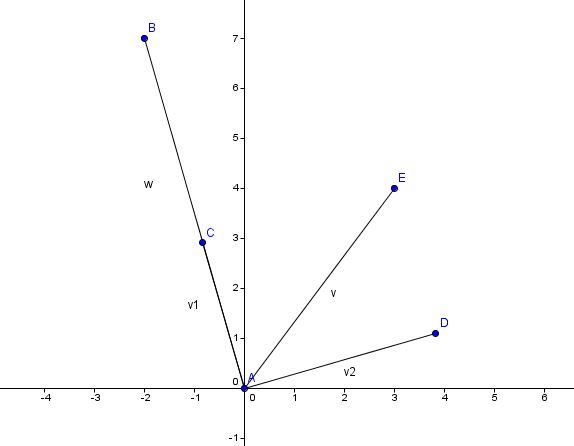It's been awhile since I did this...so...here goes nothing
v = (3, 4) w = (-2, 7)
We want to project v onto w
projw v = [( v dot w) /( length of w)^2 ] * w = [ 22/ 53) * (-2, 7) = (-44/53, 154/53)
This is v1
To find v2 we have [ v - v1] = (3, 4) - (-44/53, 154/53) = (203/53, 58/33)
Here's a pic :

The "why" of this always gave me some trouble, too. If I can remember what my Calc teacher said, if we shine a beam onto v from the "top" of the diagram perpendicular to v2, it will "project" a perfect "shadow" of v onto v2. Likewise....if we shine a beam from the "right" of the diagram onto v such that the beam is perpedicular to v1, it will "project" a perfect "shadow" of v onto v1.
Sorry, hectictar.....that's about as good of an explanation as I can supply......!!!!
I think this is used in Physics to break up components of work (as well as some other applications, too...)


